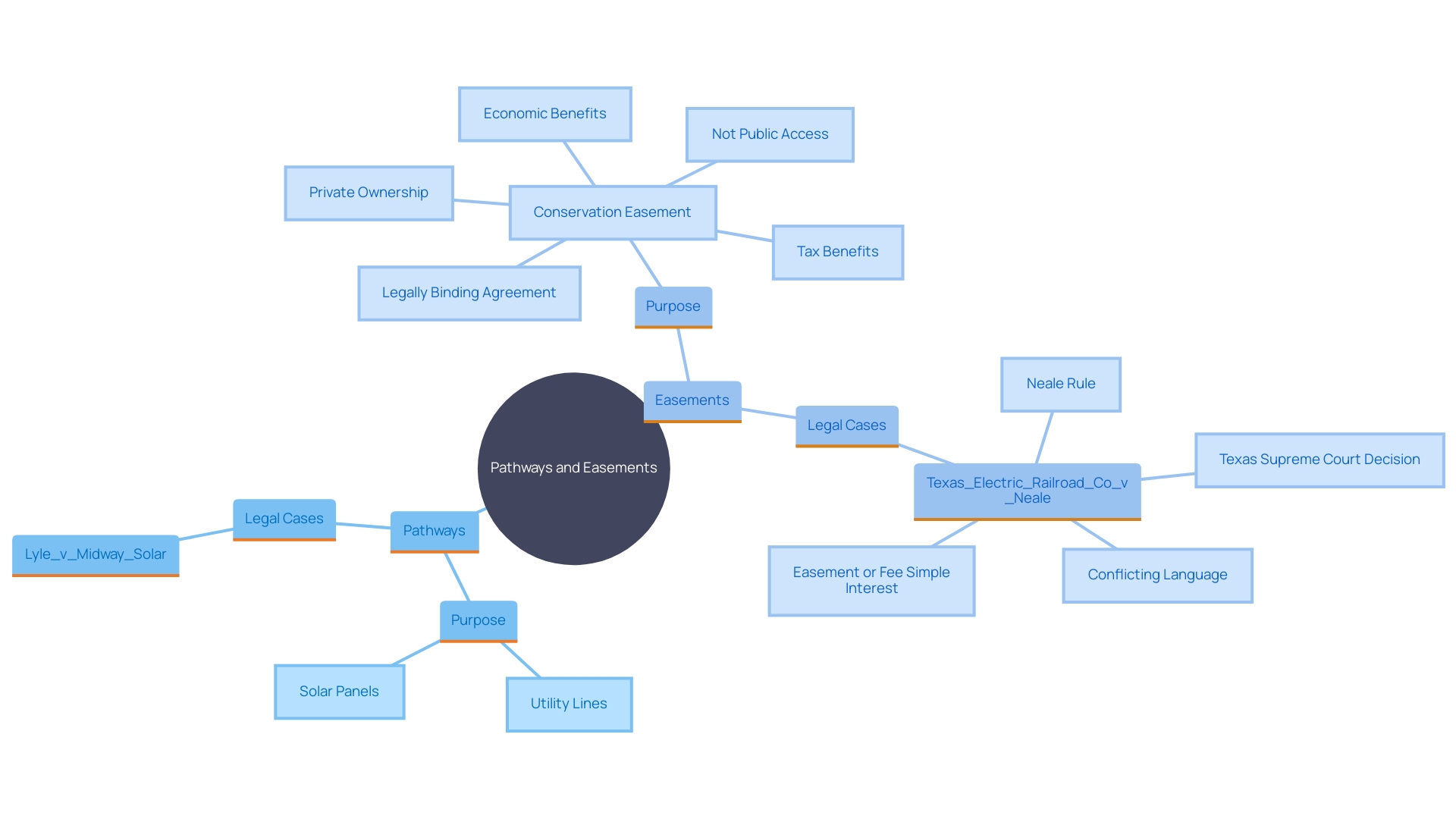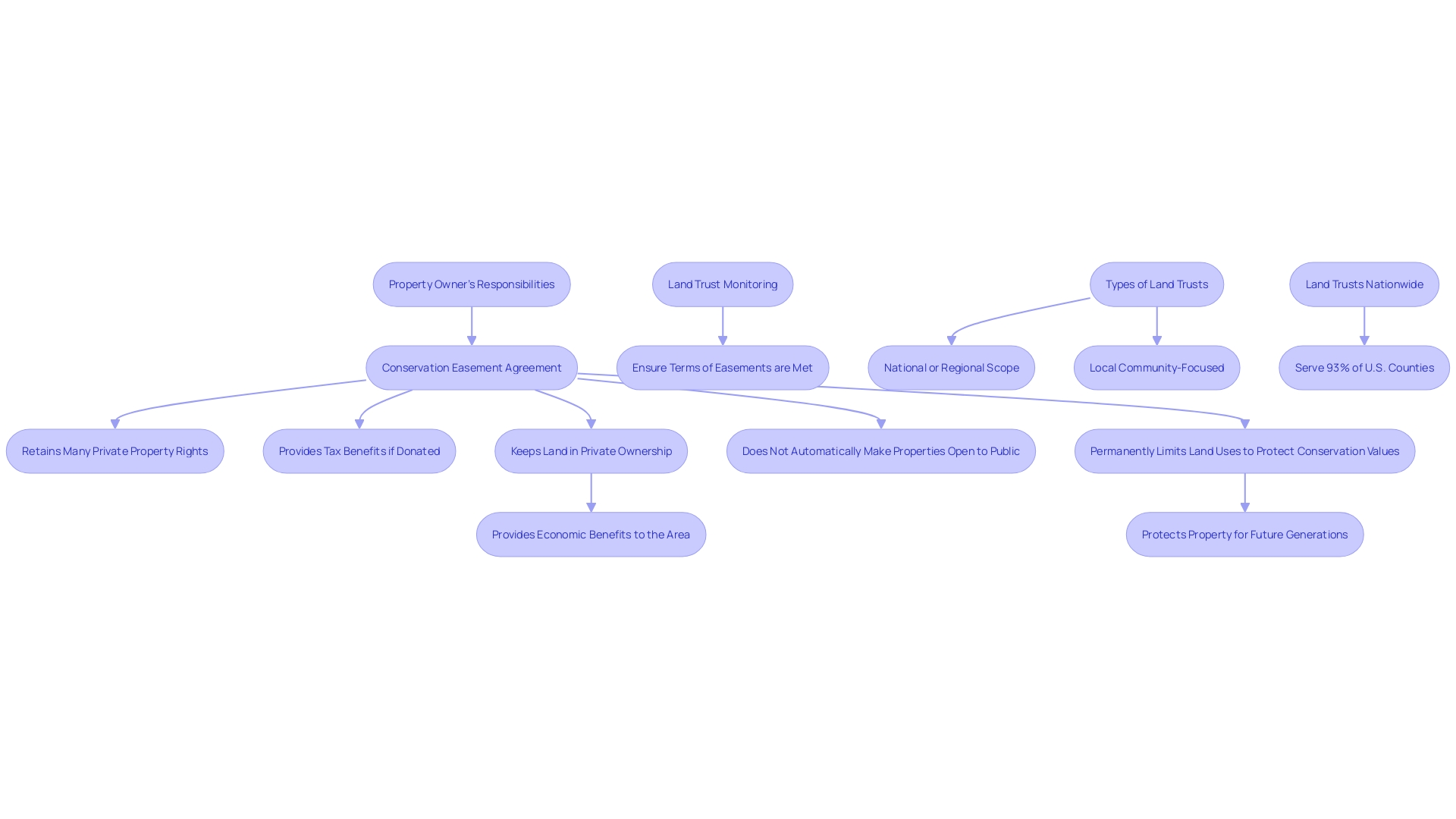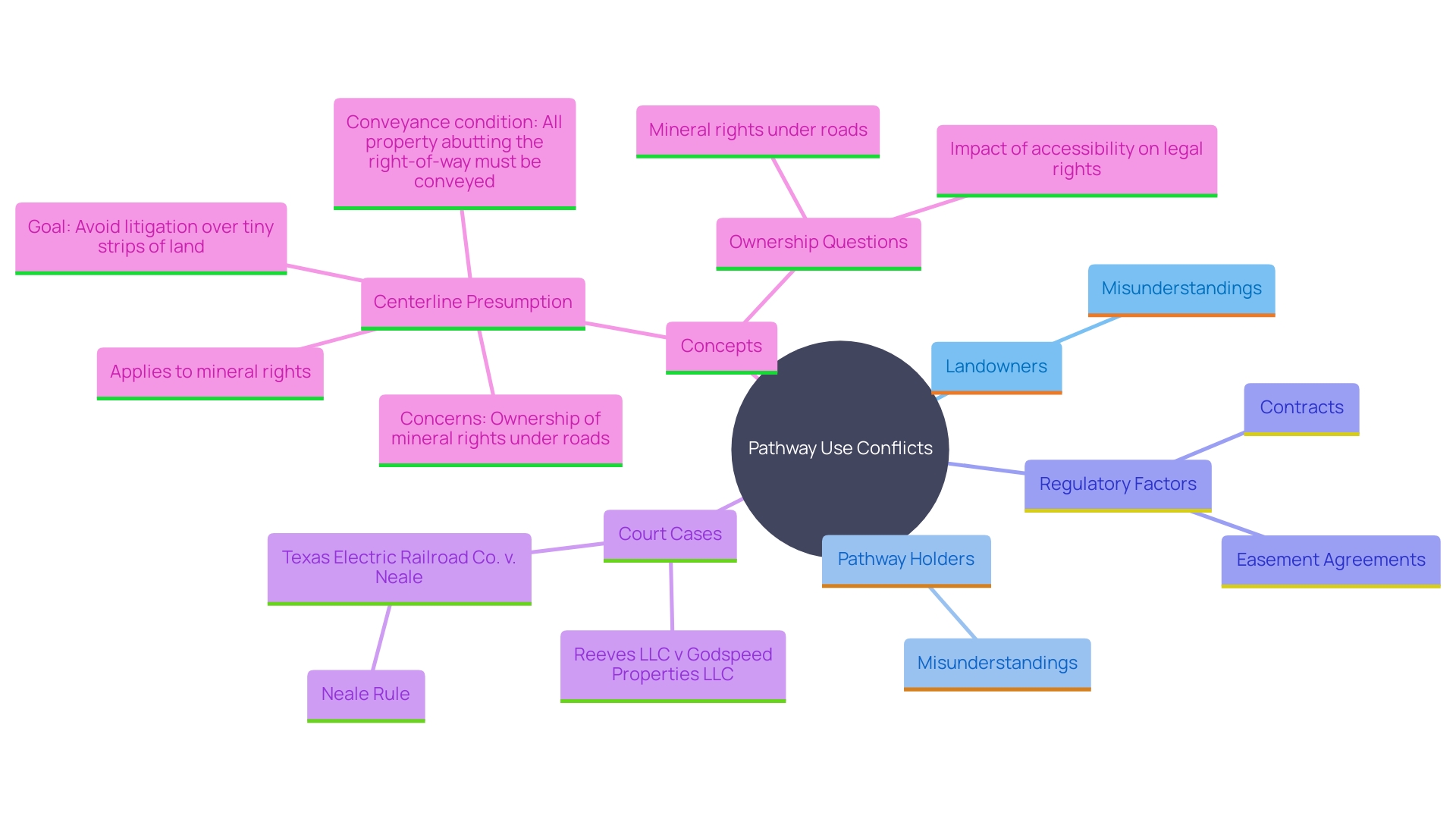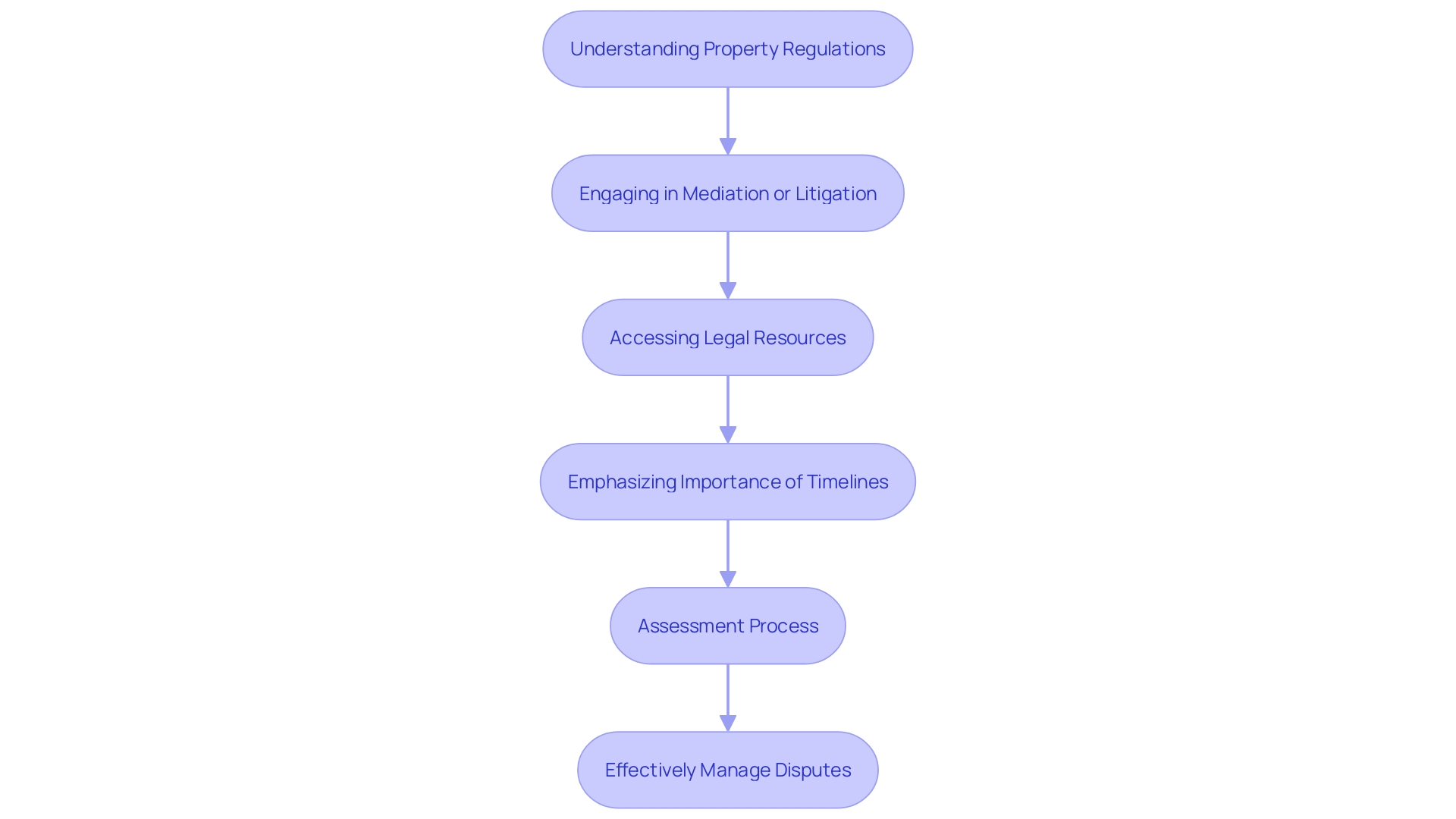Introduction
The concept of right of way is pivotal in land management and development, providing legal access across properties for various essential purposes, including utilities, transportation, and public use. This article delves into the intricate legal landscape of right of way, distinguishing it from easements, and examining the implications for property owners. The surge in infrastructure projects and renewable energy developments has intensified the need for clear right of way agreements, often leading to complex legal disputes.
By exploring ownership rights, limitations, and the resolution of conflicts, this article underscores the necessity for comprehensive legal understanding and strategic management of right of way to safeguard property values and ensure equitable access.
Definition and Scope of Right of Way
A legal access is an entitlement allowing an individual or entity to traverse a property owned by another. This access is typically granted for purposes such as utilities, transportation, or public use. Grasping the implications of an easement is essential for landowners, as it can significantly influence property utility and market value. For instance, the swift growth of renewable energy initiatives, such as wind and solar farms, has increased the need for transmission lines, which frequently necessitate right of way easements across private properties. This surge in development has, in turn, escalated the risk of disputes over property use. Eminent domain cases, such as those seen in Fort Worth where the city expedited property acquisitions for infrastructure projects by initiating the process earlier in the design phase, highlight the complexities owners may face. As mentioned by regulatory specialists, adjustments to property access because of infrastructure initiatives can greatly influence real estate value and usage, requiring comprehensive assessments and possible compensation for impacted property owners. These regulatory and practical factors highlight the significance of access laws in modern territory management and development.
Key Differences Between Right of Way and Easement
While both pathways and easements permit the use of someone else's property, they vary greatly in scope and intention. An easement generally pertains to the authorized capacity to traverse a section of property, which is essential for access and connectivity. For instance, in urban development, ensuring appropriate paths can prevent disputes over access routes and facilitate smoother transit across properties. Conversely, an easement includes a wide array of legal privileges to utilize someone else's property for particular objectives, such as setting up utility lines, drainage systems, or even solar panels. This can be seen in cases like Lyle v. Midway Solar, where the court had to balance the surface rights for solar arrays with the subsurface rights for mineral extraction. Such cases highlight the complexity and necessity of clearly defined easements to avoid conflicts between different types of land use. Understanding these distinctions helps landowners navigate legal and developmental challenges more effectively.

Ownership Rights and Limitations
Ownership privileges associated with a passage encompass a range of complexities. 'While the property owner maintains possession of the estate, they must allow the easement holder to use the area as outlined by the conditions of the agreement.'. This arrangement often includes limitations on activities that can be conducted on the property and mandates for maintenance and access. For instance, the Countryside and Rights of Way Act 2000 underscores the legal right to roam on specific types of terrain; however, many areas of open country remain inaccessible due to a lack of connecting footpaths or proximity to roads. This has resulted in demands for new laws to guarantee responsible access to these areas.
Additionally, the government has committed to increasing public access to nature, aiming for every household to be within a 15-minute walk of green spaces or water. Environmental property management scheme funds are being allocated to help owners create and maintain necessary infrastructure, such as gates, stiles, and paths, to facilitate this access. Nevertheless, these advancements must maneuver through the regulatory structures that oversee land entitlements, ensuring that the main owner's privileges and the access of the pathway holder are both honored and preserved. The intricacy of these arrangements is additionally emphasized by the necessity for explicit definitions and the handling of conflicting interests between landowners and pathway holders.

Legal Considerations for Right of Way Disputes
Conflicts regarding the use of pathways can occur because of misunderstandings or disagreements between landowners and pathway holders. These disagreements frequently encompass intricate regulatory factors, including the interpretation of contracts, local statutes, and the specific conditions detailed in the easement agreement. For example, in the case of Reeves LLC v Godspeed Properties LLC, the Alaska Supreme Court ruled that an easement holder cannot make changes to the easement that go beyond its express purposes. This choice emphasizes the significance of following closely to the conditions of way agreements to prevent disputes.
In another case, a group of homeowners in Superior, Colorado, filed a lawsuit against Rocky Mountain Metropolitan Airport over avigation easement agreements. The homeowners asserted damages resulting from heightened exposure to leaded fuel and lowered property values, demonstrating how way agreements can influence both property use and value. Comprehending these regulatory components is essential for settling disputes and guaranteeing that pathway arrangements are understood and applied accurately.
Moreover, the centerline presumption concept, which extends ownership to the middle of an adjacent right-of-way, aims to avoid litigation over small strips of land. This regulatory principle highlights the importance of clear and precise terms in way agreements to avoid conflicts. By thoroughly understanding these regulatory aspects, stakeholders can maneuver through the intricacies of way usage and reduce potential disputes efficiently.

Navigating Right of Way Disputes and Legal Perspectives
Resolving way disputes efficiently frequently requires judicial involvement to properly understand property regulations and entitlements. In many cases, parties involved may need to engage in mediation or litigation to resolve conflicts. It is crucial for both property owners and easement holders to comprehend the regulatory structure surrounding pathways to safeguard their interests. According to recent developments, courts play a critical role in ensuring that the executive branch adheres to legislative intent and reassesses the impact of statutes, thereby facilitating access to justice. This highlights the significance of specialized knowledge in navigating these disputes.
The process of resolving right of way disputes is intricate, often requiring a comprehensive understanding of environmental laws and regulations. With the growing complexity of regulatory requirements, having access to resources such as the Peer Review Network of Global Climate Litigation can provide invaluable support. This network includes practitioners and scholars who ensure that databases are up-to-date, reflecting the latest court decisions and regulatory changes.
Additionally, statistics show that allowing assessment timelines for projects, including those related to pathways, average 4.3 years, with a span from 1 to 11 years. This prolonged process highlights the need for a streamlined approach to regulatory reviews. Understanding these timelines is crucial for stakeholders to effectively plan and manage their projects.
In summary, navigating the way of way disputes requires a thorough understanding of the legal framework, engagement in mediation or litigation, and access to updated legal resources. By doing so, landowners and right of way holders can better protect their interests and ensure compliance with regulatory requirements.

Conclusion
The right of way is essential in land management and infrastructure development, providing legal access across properties that significantly impacts property utility and market value. With the growing demand for infrastructure and renewable energy projects, understanding right of way agreements has become increasingly important to mitigate potential disputes.
Differentiating between right of way and easements is crucial for landowners, as each serves distinct legal purposes. Clear definitions are necessary to prevent conflicts, while ownership rights and limitations add complexity to these arrangements. Landowners must find a balance between their rights and the access granted to right of way holders.
Legal disputes regarding right of way usage often arise, emphasizing the importance of adhering to the specific terms outlined in agreements. Mediation or litigation may be required to resolve misunderstandings, reinforcing the need for a comprehensive understanding of the legal framework governing these issues.
In summary, a well-informed approach to right of way law is vital for both landowners and right of way holders. By understanding their rights and the implications of various agreements, stakeholders can effectively navigate the complexities of property access, ensuring equitable access while safeguarding property values in a rapidly evolving infrastructure landscape.




